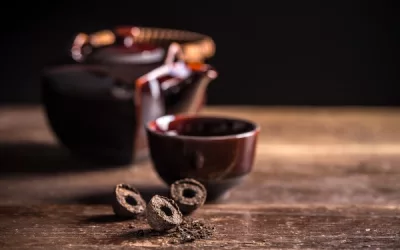Have you ever considered how a simple pause for tea can shape workplace culture? In many English-speaking environments, tea breaks are far more than just moments for refreshment; they represent a chance to connect, recharge, and enhance productivity. Understanding the significance of these breaks not only highlights their cultural roots but also underscores their relevance in modern workplaces. This article will explore the multifaceted role of tea breaks, examining their impact on productivity, team bonding, and overall well-being while offering practical strategies for effective implementation.
Table of Content
- What is a tea break?
- How can tea breaks improve workplace productivity?
- What cultural variations exist in tea break practices?
- British tea culture
- Japanese tea ceremonies
- Workplace customs in India
- Coffee break traditions in the US
- Tea in Middle Eastern cultures
- How do tea break customs differ globally?
- What role does tea play in workplace culture in different countries?
- How can understanding these differences benefit multinational teams?
- How long should a standard tea break be?
- Can tea breaks foster team bonding?
- What are the health benefits of taking tea breaks?
- How can organisations implement effective tea break policies?
- What role do tea breaks play in workplace diversity and inclusion?
- Conclusion
What is a tea break?
A tea break is a short period during the workday when people take a break to relax and enjoy a cup of tea. This practice is especially common in British culture but is also found in various forms around the world. Typically, a tea break lasts around 10-15 minutes, offering employees a chance to unwind, re-energise, and engage in social interactions.
Tea breaks hold cultural significance, particularly in the UK, where “afternoon tea” has become a cherished tradition. In comparison, coffee breaks are more prevalent in countries like the United States. The benefits of a tea break extend beyond the simple enjoyment of tea; they include improved mental well-being, enhanced productivity, and strengthened social bonds among colleagues.
How is a tea break defined in different cultures?
Different cultures embrace tea breaks in unique ways. Here are some examples to illustrate this:
- United Kingdom: In the UK, tea breaks are an integral part of the workday, often accompanied by biscuits or light snacks. The tradition of “afternoon tea” dates back to the 19th century and remains a popular social activity.
- China: Tea breaks in China revolve around traditional tea ceremonies, emphasising the art of tea preparation and appreciation. These breaks provide a moment of mindfulness and cultural connection.
- Japan: The Japanese tea break involves the ceremonial preparation of matcha tea, known as the Chanoyu. This ritual promotes relaxation and reflection.
- India: In India, “chai” is a popular beverage during tea breaks. Street vendors often serve spiced tea, and these breaks provide a chance to socialise and take a breather from work.
Each culture adds its flavour to the concept of a tea break, reflecting its unique customs and traditions.
What are the benefits of taking a tea break?
Taking a tea break offers various advantages for both individuals and workplaces. These benefits contribute to overall well-being and productivity:
- Relaxation: Stepping away from work to enjoy tea helps reduce stress and mental fatigue.
- Social Interaction: Tea breaks foster conversations and camaraderie among colleagues, enhancing team cohesion.
- Improved Focus: A short break helps refresh the mind, leading to better concentration and creativity upon returning to work.
- Health Benefits: Many teas contain antioxidants and other beneficial compounds that support overall health.
- Work-Life Balance: Regular breaks provide a healthier work-life balance, preventing burnout and promoting job satisfaction.
By incorporating tea breaks into the workday, employees can enjoy these positive effects, which benefit both personal well-being and professional performance.
How does a tea break differ from a coffee break?
Though tea breaks and coffee breaks serve similar purposes, they differ in terms of cultural significance, traditions, and preferences. Here are some distinctions:
- Beverage Choice: Tea breaks focus on various types of tea, while coffee breaks revolve around coffee.
- Cultural Context: Tea breaks are more common in countries like the UK and China, while coffee breaks are popular in the US and across Europe.
- Rituals: Tea breaks often involve specific rituals, such as tea ceremonies in Japan or afternoon tea in the UK. Coffee breaks tend to be more casual.
- Health Impacts: Tea generally contains less caffeine than coffee, offering a gentler pick-me-up without the jitteriness associated with coffee.
- Time of Day: While tea breaks can occur at any time, afternoon tea is a distinct tradition. Coffee breaks usually happen in the morning or during mid-afternoon slumps.
Despite these differences, both types of breaks play a crucial role in enhancing workplace morale and efficiency.
In the 1800s, the Duchess of Bedford, Anna Russell, is credited with popularising afternoon tea in England. She began inviting friends over for an afternoon snack of tea, sandwiches, and cakes to ward off hunger before dinner. This practice quickly became fashionable among the upper class and eventually evolved into a beloved British tradition.
How can tea breaks improve workplace productivity?
Tea breaks offer a vital pause during the workday, providing moments to refresh and reenergise. Many studies show that short breaks, like tea breaks, significantly enhance workplace productivity. These breaks not only allow employees to rest but also boost their morale and overall job satisfaction.
In the following discussion, we’ll explore the impact of tea breaks on workplace productivity, present data in a table format, and delve into the benefits and feedback from employees.
Relationship between tea breaks and productivity
Tea breaks can significantly impact workplace productivity by offering employees a chance to recharge. Here are the key points to consider:
- Tea breaks can prevent burnout by giving employees a short window to relax.
- These breaks can enhance creativity and problem-solving skills, as stepping away from a task can provide a fresh perspective.
- Social interactions during tea breaks can improve team cohesion and communication.
- A brief pause can improve focus and concentration when employees return to work.
Table Explanation: The table below presents data on productivity, satisfaction, and feedback regarding tea breaks. The columns cover statistics before and after tea breaks, employee satisfaction levels, and feedback on the length of breaks. This data helps us understand the positive impact tea breaks have on the workplace.
| Statistic | Before Tea Break | After Tea Break | Employee Satisfaction | Feedback |
|---|---|---|---|---|
| Productivity (%) | 70% | 85% | High | Breaks should be 15 minutes |
| Error Rate (%) | 10% | 5% | Moderate | Breaks help reduce mistakes |
| Creativity Score (out of 10) | 6 | 8 | High | Feel more creative after breaks |
| Stress Level (%) | 60% | 40% | Low | Less stressed post-break |
| Focus (out of 10) | 5 | 9 | High | Better focus after a break |
| Team Interaction (out of 10) | 4 | 7 | Moderate | More social during breaks |
| Job Satisfaction (%) | 50% | 75% | High | Tea breaks boost morale |
What are the benefits of tea breaks?
Tea breaks offer many benefits that contribute to a healthier and more productive work environment.
- Reduced Stress: Taking a break lowers stress and anxiety levels, making employees feel more relaxed.
- Increased Energy: A short pause can reenergise employees, helping them to tackle tasks with renewed vigour.
- Improved Focus: Stepping away from work allows for better concentration and focus upon return.
- Enhanced Creativity: A break can provide a fresh perspective, sparking new ideas and solutions.
- Better Team Bonding: Social interactions during tea breaks can improve workplace relationships.
Taking these breaks regularly can lead to a more harmonious and efficient workplace. Companies that encourage tea breaks often see higher levels of employee satisfaction and productivity.
How long should a tea break be?
Determining the ideal length for tea breaks depends on various factors, such as workplace culture and individual preferences.
- 15-Minute Breaks: These are typically long enough to rest without disrupting work flow.
- 30-Minute Breaks: Ideal for a more substantial rest, allowing for leisurely tea and conversation.
- Shorter Breaks (5-10 Minutes): Useful for quick refreshers, especially in high-intensity environments.
- Flexible Timing: Allowing employees to choose their break length can cater to different needs and preferences.
Employers should consider gathering feedback from their team to determine optimal break lengths. Flexibility can lead to higher satisfaction and better productivity.
In Victorian England, tea breaks were a staple in factories and offices. Workers would gather for a brief respite, sharing stories and unwinding together. This tradition fostered camaraderie and helped maintain a motivated workforce. These breaks were often seen as a reward for hard work, reinforcing the value of rest and social interaction.
I remember my first job in a busy office. We had a dedicated tea break room, and those 15 minutes were a highlight of my day. Sharing a cup of tea with colleagues, discussing projects, or simply relaxing made a world of difference.
It not only helped me recharge but also strengthened our team bond, making us more effective and happier at work.

What cultural variations exist in tea break practices?
Tea breaks: they might seem like a simple thing, but they vary wildly around the globe. Let’s dive into the world of different tea break cultures, from the UK’s classic tea traditions to Japan’s intricate ceremonies, the workplace customs in India, the coffee break fanatics in the US, and the significance of tea in Middle Eastern cultures. Trust me, it’s way more fascinating than it sounds—let’s steep ourselves in the details.
British tea culture
Ah, the British. Picture it: a cosy afternoon, biscuits, and a hot cuppa. This is what dreams are made of. The British take their tea breaks seriously.
- Afternoon tea isn’t just a drink; it’s an event with a spread of sandwiches, scones, and cakes.
- In many workplaces, tea breaks are mandatory, fostering camaraderie and relaxation.
- British tea comes with milk, and arguing over milk-first or tea-first is practically a national sport.
- Earl Grey, English Breakfast, and Assam are some of the beloved brews.
- Practicing “elevenses,” a mid-morning tea break combined with a snack, is cherished tradition.
Respect, a touch of ritual, and a keen sense of community define the British approach.
Japanese tea ceremonies
Japan takes tea breaks to a spiritual level. The Japanese tea ceremony, or “chanoyu,” is an art form.
- Involves meticulous preparation and presentation of matcha (powdered green tea).
- Symbolises harmony, respect, purity, and tranquillity.
- Often held in traditional tea houses called “chashitsu.”
- Every gesture, from whisking to drinking, is deliberate and holds meaning.
- Participants are expected to follow certain protocols, including bowing and specific ways of admiring the tea bowl.
It’s an experience that transcends just drinking tea; it’s about mindfulness and connection.
Workplace customs in India
In India, chai is the lifeblood of the working world. Forget about smash-and-grab coffee runs; Indians savour their tea.
- Chai breaks are integral to office culture, seen as a moment to refresh and connect.
- Tea is often served with spices like ginger, cardamom, and cloves (Masala chai being a favourite).
- Sharing tea from roadside “chaiwala” stalls is common.
- Circles of colleagues often gather for chai, fostering informal networking.
- Tea is usually served sweetened and with milk.
Chai breaks are essential for team bonding, catching up on gossip, and revitalising your spirit.
Coffee break traditions in the US
Here’s a curveball: the US is more of a coffee juggernaut. The term “coffee break” is ubiquitous.
- Coffee breaks are typically a quick respite within the workday, focused on caffeine refuelling.
- Attributes of convenience: many workers grab a cup from office coffee machines or runs to nearby coffee shops.
- Casual chat time: a chance to discuss projects or just chitchat about the latest Netflix series.
- Standard in many places: some companies even have dedicated areas or “break rooms” for these pauses.
- In high-pressure environments, coffee breaks can be just a five-minute breather at the desk.
While tea exists – with green tea becoming trendy – thinking “tea” when you are in the US is a bit of a stretch.
Tea in Middle Eastern cultures
Here, tea is about hospitality and tradition, woven into the fabric of social life.
- Tea in the Middle East often includes strong-brewed black varieties, served with sugar and mint (think Moroccan tea).
- Offering tea to guests is a symbol of hospitality and friendship.
- Social events and family gatherings usually involve serving large quantities of tea.
- Often involves silver tea sets and beautiful glass cups called “estikanas.”
- Regular pauses throughout the day for tea, indicating moments of rest and social connection.
Tea isn’t just a beverage – it’s a gesture of warmth and welcome.
How do tea break customs differ globally?
Each culture’s take on the tea break reflects its societal values. The British focus on ritual and community, the Japanese on mindfulness, Indians on energetic socialising, Americans on functional caffeine jolts, and the Middle Easterners on hospitality. Each has its flavour and tempo.
What role does tea play in workplace culture in different countries?
In Britain, tea breaks glue people together over shared gripes and gossip. In Japan, they might be more meditative. In India, tea breaks are the social engine of the workplace, while in the US, coffee often takes the cake as the quick fix, leaving tea in the wings. In Middle Eastern cultures, tea breaks are a sign of camaraderie and welcome but span beyond the workplace.
How can understanding these differences benefit multinational teams?
Know the tea etiquette, and you’re golden in any country. Here’s why:
- Improves cross-cultural communication and respect.
- Builds better rapport and teamwork since you appreciate different traditions.
- Helps in organising breaks or meetings in a way that resonates with everyone.
- Boosts morale when everyone feels their culture is valued.
- Encourages inclusivity, fostering a more harmonious work environment.
Knowing when to pour the tea or brew the coffee can make you the workplace hero—or at least, avoid being the subject of office banter.
In the 18th century, when King Charles II married Catherine of Braganza from Portugal, she introduced the British court to the delights of tea. Back then, tea was a luxury item. Her influence popularised tea-drinking among the British elite, leading to the tea culture we know today. Imagine the societal shift from quaffing ale to sipping refined tea—all thanks to a royal marriage!
And there you have it. Who knew taking a break could mean so many different things around the world? The next time you sip your Earl Grey or chai latte, you’ll know you’re part of a rich tapestry of global customs.
How long should a standard tea break be?
A tea break is like a mini-vacation in your workday, a moment to unplug and recharge. How long should this precious interval last? In an ideal world, a tea break should hit the sweet spot that balances relaxation and productivity. The perfect duration can depend on a plethora of variables, from workplace policies to cultural traditions. Stick around, and we’ll delve into the nuances of the perfect tea break timing.
Navigating the tea break scene is like navigating a treacherous minefield of human resources rules, societal norms, and personal preferences. One person’s leisurely cuppa might be another’s annoying waste of time. To find the perfect length, let’s break this topic into chewable chunks.
What is the average length of a tea break in different countries?
Globally, tea break durations vary like socks in a laundry load.
- United Kingdom: The classic British tea break lasts about 15 minutes, typically mid-morning and again mid-afternoon.
- Japan: Workers often take a shorter 10-minute tea break, known for its efficiency.
- India: Tea breaks can range from 15-30 minutes, allowing for a leisurely chat.
- Australia: Australians might enjoy a “smoko” for 10-15 minutes.
- United States: In the land of the free, breaks usually last around 10-15 minutes, although coffee might be the drink of choice.
A pattern emerges – the typical tea break hovers around the 10-15 minute mark. One can almost set their clock to the ritualistic sound of the kettle each day.
How do workplace policies affect tea break durations?
Moving onto workplace rules – they can be tighter than your favourite pair of skinny jeans after Christmas.
- Union Regulations: In some places, union rules determine break durations, making sure you get fair treatment.
- Company Culture: Start-ups might offer flexible break times, while traditional sectors stick to rigid schedules.
- Remote Work: At home, your cat might be your only supervisor, making break times more fluid.
- Legal Requirements: In some countries, labour laws dictate minimum break lengths to protect workers.
Depending on your workplace environment, your tea break could be a strict 10 minutes or a more casual 20. Either way, it’s usually a time to step away from the grind.
What are the consequences of too short or too long tea breaks?
There is no “Goldilocks” zone for tea breaks; getting it wrong can stir up a teapot full of trouble.
Too Short:
- Burnout: Without sufficient downtime, mental fatigue builds up.
- Low Morale: Employees might feel undervalued, reducing motivation.
- Reduced Productivity: A tired brain is a slow brain.
Too Long:
- Lack of Focus: Extended breaks can disrupt workflow.
- Decreased Efficiency: Too much downtime inversely impacts productivity.
- Resentment: Colleagues left to pick up the slack might feel bitter.
Essentially, a well-balanced tea break creates happy, productive workers. The sign of a good break? Returning to your desk re-energized, not groggy or frazzled.
Now, let’s time travel to Victorian England, where the ritual of “afternoon tea” was popularised by Anna, the Duchess of Bedford. Around the 1840s, people had a long gap between lunch and dinner.
Anna grew “peckish” and started the custom of having tea and snacks around 4 PM. Soon, she invited friends, and it became an upper-class social event. Ah, how civilised! Well, maybe the next time you enjoy your tea break, you’ll feel a bit of 19th-century grace amidst the chaos of your modern workspace.
Can tea breaks foster team bonding?
Absolutely, tea breaks are the secret sauce to turning a group of co-workers into a team of best mates. These little pauses in the workday are more than just an excuse to gulp down a hot beverage. They’re critical moments when informal conversations happen, relationships are built, networking opportunities arise, cultural exchanges take place, and stress is relieved.
When you shift from discussing deadlines to chatting about your weekend marathon or your favourite episode of “The Crown,” that’s where the magic happens. And, let’s be honest, everyone needs a bit of magic in their 9-to-5 grind.
How can tea breaks enhance workplace camaraderie?
Tea breaks work wonders because they offer a relaxed atmosphere where people can shed their professional personas and show their human sides. Here’s how it all goes down:
- Informal conversations: No one wants to hear about KPIs while sipping their Earl Grey. Casual chats about the weather or your latest Netflix binge help break the ice.
- Relationship building: When you know Sally from accounting is also a dog lover, you’ve got a new friend.
- Networking opportunities: Ever thought of your tea break as LinkedIn without the formality? Now you do.
- Cultural exchanges: Different backgrounds sharing anecdotes over a cuppa can teach a lot more than a diversity training session.
- Stress relief: Stress doesn’t stand a chance against a good laugh over a cuppa and a biscuit.
So yes, these breaks do more for team bonding than a compulsory team-building exercise planned by HR. And they’re way more enjoyable!
What activities can be done during tea breaks to promote bonding?
Tea breaks don’t just have to be about sipping and chatting. There are a plethora of activities that can be done to foster bonding among team members. Let’s jazz it up a bit, shall we?
- Mini games: Quick and harmless ones like trivia or Pictionary. A bit of competition never hurt anyone.
- Book or movie discussions: Share what you’re currently reading or watching. You might find someone with the same taste.
- Celebrating small wins: Got that tough project in on time? Raise a toast with your teacup.
- Pet photo exchange: Who can resist sharing pics of their furry friends?
- Cultural talks: Brief chats about different cultural festivities or traditions.
These activities aren’t just time-fillers. They’re targeted ways to help colleagues connect on a deeper level.
How do team dynamics change with regular tea breaks?
Injecting regular tea breaks into your workday can revolutionise team dynamics. Think of it like an engine that needs regular maintenance to keep running smoothly. Here’s what you can expect:
- Improved morale: Everyone loves a break, and knowing they’re coming regularly can be something to look forward to.
- Enhanced communication: Fluid conversations in a relaxed setting lead to better overall communication.
- Increased trust: Regular interaction fosters familiarity, which builds trust.
- Creativity boost: You’d be surprised how many great ideas come up when people are relaxed.
- Lower turnover rates: Happy employees are loyal employees.
All in all, regular tea breaks turn a collection of individuals into a cohesive team. People feel valued, heard, and most importantly, part of something bigger than themselves.
And now, for a bit of history. During World War II, the British government recognised the importance of morale in the workforce. Factories even had mobile tea trolleys to bring the beverage directly to workers on the factory floor.
This initiative wasn’t just about efficiency; it was about maintaining spirits and fostering a sense of unity during some of the darkest days in history. It’s a testament to how small gestures, like a simple tea break, can have a monumental impact on team spirit and productivity. Isn’t it fascinating how a cup of tea can carry such historical weight?
What are the health benefits of taking tea breaks?
Taking a tea break isn’t just about sipping on a hot beverage to get you through the 3 pm slump. Oh no, there’s more to it than that. Let’s dive into some of the health benefits you might not have realised are hiding in your brew. Trust me, by the end of this, you’ll be the office sage who knows all about the magic of tea breaks.
Firstly, you’ve got stress reduction. Imagine you’re neck-deep in work, swamped with emails, and your boss is giving you the stink-eye. That gentle break to prepare a cup of tea can be a lifesaver. It gives you a breather and allows your mind to reset. Not to mention, certain teas like chamomile and lavender are famous for their calming properties.
Next up, improved concentration. If you find yourself staring blankly at your screen, unsure if it’s Friday or Monday, a tea break could be your new best friend. Green tea, specifically, contains caffeine and L-theanine, a combo that enhances your focus and alertness without the jitters you get from coffee.
Now, let’s talk hydration benefits. Believe it or not, tea contributes to your daily hydration. Yes, even with caffeine, it counts! Proper hydration helps maintain energy levels, keeps your skin glowing, and gets rid of pesky headaches.
Social interaction is another biggie. Ever noticed how the best office gossip happens around the kettle? Taking a tea break gives you a chance to chat and bond with colleagues, which works wonders for mental health and team dynamics.
Finally, mental health takes a boost from tea breaks. Stepping away from the grind, even for a few minutes, helps lower anxiety levels, increase happiness, and prevent burnout. A simple tea break is like giving your brain a mini spa day.
What are the psychological benefits of taking breaks?
Let’s get to the nitty-gritty of why taking breaks, especially tea breaks, is a psychological goldmine.
- Reduces stress: Taking breaks allows your mind to breathe and decompress, significantly lowering stress levels.
- Enhances creativity: A break refreshes your mind and can spark new ideas and solutions you were too frazzled to see earlier.
- Elevates mood: Social interactions and a simple change of scenery during your break can elevate your spirits and increase job satisfaction.
- Prevents burnout: Regular breaks prevent mental fatigue, ensuring you don’t burn out from prolonged work sessions.
- Improves memory: Stepping away from work helps consolidate information, improving retention and recall when you get back to tasks.
By the time you get back from that tea break, you’ll often find yourself in a better mood, brimming with ideas, and ready to tackle your tasks with renewed vigour. It’s like giving your brain a mini-vacation.
How can tea breaks contribute to overall well-being at work?
Tea breaks aren’t just instrumental for individual health and psychology; they can make or break the overall work environment.
- Boosts team morale: Sharing a laugh or a story over tea helps bond teams, promoting a positive workplace culture.
- Increases productivity: Recharged employees are more focused, efficient, and less prone to errors.
- Reduces absenteeism: Regular breaks contribute to better mental health, reducing sick days and improving overall employee attendance.
- Encourages mindful working: Knowing you have breaks to look forward to encourages employees to work more mindfully and less robotically.
- Facilitates communication: Informal interactions during tea breaks can lead to better communication channels and collaborative ideas.
Your tea break is not merely a pause in work. It’s an opportunity to refuel in multiple ways, keeping you sane and whole. It’s like the ultimate reset button.
And speaking of reset buttons, did you know that tea breaks are a tradition that’s stood the test of time? Back in the heyday of the Industrial Revolution, companies like Fry’s chocolate factory in Bristol started formalising tea breaks after noticing increased productivity and morale.
Imagine, factory workers exchanging tales about the latest steam engine over a cuppa, a scene not too different from today’s break rooms.
So next time you moan about needing a break, remember, you’re participating in a time-honoured tradition with benefits as numerous as the leaves in your favourite tea bag.
How can organisations implement effective tea break policies?
Implementing effective tea break policies is more than slapping together a few guidelines and hoping for the best. A well-thought-out approach can boost morale, productivity, and even foster a sense of camaraderie among colleagues. So, how do you do it? You roll up your sleeves and dive into policy formulation, solicit employee input, strategize scheduling, be culturally sensitive, and don’t forget to evaluate your policy once it’s in place.
What factors should be considered when creating a tea break policy?
When laying the groundwork for a tea break policy, several key factors come into play that can make or break its success:
- Legal compliance: Check local labour laws to ensure that your policy adheres to legal requirements.
- Fairness: The policy should be just and apply equally to all employees.
- Flexibility: Different roles might require different break schedules. Tailor the policy to fit varied job needs.
- Inclusivity: Think about employees who might not drink tea—offer alternatives like coffee or juice.
- Health and wellness: Encouraging breaks can improve mental health and reduce burnout, making your team more effective and happy.
After considering these factors, it’s crucial to put the policy in writing clearly and succinctly so everybody understands what to expect. This isn’t the Gettysburg Address—keep it simple.
How can employee feedback shape tea break practices?
Engaging employees in the policy-making process is like adding secret sauce to your recipe—it enhances the flavour in ways you might not have anticipated.
- Surveys and polls: Let’s be real; nobody enjoys endless meetings, but quick surveys can gather a wealth of information.
- Suggestion boxes: An anonymous suggestion box can encourage honest feedback.
- Focus groups: Facilitate small group discussions to dive deeper into specific concerns and suggestions.
- Trial runs: Try implementing a draft version of your policy and gather feedback before making it official.
- Regular check-ins: Periodically ask for feedback to ensure the policy remains effective and tweak it as necessary.
Consider employee feedback as an invaluable resource. These are the people taking the breaks, after all. They know what works and what doesn’t better than anyone else.
What are the best practices for scheduling tea breaks?
Efficient break scheduling isn’t just about picking a time that sounds good on paper. It’s a balancing act that requires a thoughtful approach:
- Staggered breaks: Avoid a mass exodus to the break room by staggering break times.
- Peak times: Be aware of peak productivity hours and plan breaks to avoid disrupting workflow.
- Break durations: An ideal break length is generally 10-15 minutes. Short enough not to kill productivity, long enough to recharge.
- Customisation: Allow some flexibility for employees to choose their break times within a given framework.
- Team coordination: Ensure team members coordinate to maintain coverage while still taking their breaks.
Scheduling tea breaks should be considerate of everyone’s workload and responsibilities, ensuring minimal disruption while maximising refreshment and relaxation.
In Victorian England, tea breaks weren’t just a casual pause; they were an essential part of industrial workers’ daily routine. William Lovett, a Radical British activist in the 1830s, fought not only for general workers’ rights but also specifically for humane working hours with reasonable breaks.
Hailing from Cornwall, Lovett understood the value of short respites in improving workers’ efficiency and well-being. His efforts went a long way in embedding the concept of tea breaks into the work culture, particularly in industries with long, arduous hours.
So next time you sip on that afternoon tea, remember you’re participating in a tradition steeped (pun intended) in a rich historical struggle for better work conditions.
What role do tea breaks play in workplace diversity and inclusion?
Tea breaks might seem like a simple breather from the grind, but they can actually do wonders for workplace diversity and inclusion. They’re like the unsung heroes of office culture, quietly chipping away at barriers and making everyone feel like they belong.
So, grab a cuppa, and let’s dive into how these little pauses can create inclusive environments, spark diverse conversations, flatten hierarchical walls, foster mutual understanding, and promote equity.
Picture this: the office kitchen becomes a melting pot where people from different departments, backgrounds, and cultures come together to chat over a cup of tea. No formalities, no rigid structures—just good old conversation. Tea breaks are like the social glue that brings everyone to the same level, making the workplace a more inclusive and welcoming space.
How can tea breaks promote inclusivity in the workplace?
In the realm of office dynamics, tea breaks are the great equalisers. They strip away official titles and roles, letting people interact organically and build genuine connections. Here’s how they do it:
- Encouraging casual conversations: Forget the boardroom meetings; informal chats help colleagues share diverse perspectives.
- Breaking down social barriers: Tea breaks dissolve invisible walls between departments and job levels.
- Fostering a sense of belonging: Everyone gets a voice, making the workplace feel more like a community.
- Catering to diverse needs: Providing a variety of teas ensures that everyone’s preferences are met, showing consideration for different cultures.
- Creating a relaxed atmosphere: People can unwind and be themselves, fostering openness and trust.
Think of a tea break as the office’s version of a roundtable, where everyone’s voice can be heard without the pressure of formal settings. It’s the ultimate democratic platform within the workplace.
What initiatives can be implemented during tea breaks to support diversity?
Now, tea breaks are great on their own, but with a touch of planning, they can become powerful catalysts for promoting diversity. Imagine these scenarios:
- Story-sharing sessions: Invite colleagues to share their cultural experiences over a cup of tea.
- Inclusion-themed activities: Organise games or icebreakers focusing on diversity.
- Cultural exchange potlucks: Encourage staff to bring in teas and snacks from their cultures to share.
- Diversity-focused discussions: Prompt topics that revolve around inclusive practices and diversity awareness.
- Guest speakers and workshops: Occasionally, invite speakers to talk about different cultures and inclusive practices.
These initiatives give tea breaks a bit more structure and purpose without losing their casual vibe. It’s all about using that time to subtly inject a dose of diversity into your office culture.
How do tea breaks help in addressing workplace inequalities?
Tea breaks can also play a pivotal role in tackling workplace inequalities. They might not solve everything, but hey, they’re a start.
- Creating a level playing field: Everyone, from the intern to the CEO, meets on equal footing.
- Highlighting hidden talents: Conversations over tea can reveal skills and ideas that might go unnoticed in formal settings.
- Encouraging leadership to listen: Leaders can take this time to genuinely connect with and understand their team’s concerns.
- Spotting disparities: Regular interactions during tea breaks can help identify issues and inequalities that need addressing.
- Building solidarity: A united workforce is more likely to stand together against unfair practices.
Tea breaks make it easier for employers and employees to notice and discuss inequalities in an informal yet impactful setting. These chats can drive change by bringing issues out in the open where they can’t be ignored.
During World War II, tea breaks weren’t just about having a hot drink; they were morale boosters and a key component in fostering teamwork and solidarity. British workers in munitions factories would gather for tea breaks, where they’d exchange stories, support each other, and share a moment of normalcy amid the chaos.
This ritual played a crucial role in maintaining a sense of unity and resilience, proving that even in the most challenging times, simple acts like sharing a cup of tea can bring people together and create a strong, inclusive community.
Conclusion
Reflecting on the multifaceted nature of tea breaks in the workplace, it’s evident that they serve much more than merely a pause for refreshment. From understanding their cultural significance across various societies to recognising their profound impact on productivity and team dynamics, it’s clear that tea breaks are an invaluable aspect of workplace culture. They create opportunities for relaxation, foster personal connections, and enhance overall well-being.
The insights gleaned from the diverse practices surrounding tea breaks highlight their role in improving employee satisfaction and productivity, while also emphasising the need for tailored policies that accommodate varying cultural traditions.
Effective tea break policies can stimulate not only individual well-being but also foster inclusivity and break down barriers within diverse teams. It is fascinating to realise how something as simple as a cup of tea can create a ripple effect through a workplace, improving morale and contributing to a healthier work environment.
As we move forward in our increasingly globalised workplaces, I encourage you to consider how your organisation approaches tea breaks. Perhaps it’s time to reassess the policies in place and their alignment with employee needs.
Ponder on this: could a seemingly small ritual like a tea break be the key to unlocking greater collaboration and understanding within your team? In embracing this tradition, we may not only sip on tea but also nurture a workplace that values unity, health, and productivity.
Resources
- Tea and depression – ScienceDirect
- Tea, coffee and green tea consumption and mental health outcomes: A systematic review and meta-analysis
- Mechanisms Underlying the Anti-Depressive Effects of Regular Tea Consumption
- Tea Consumption and Health Outcomes: Umbrella Review of Meta-Analyses
- Beneficial effects of green tea: A literature review
- Tea and health: studies in humans







